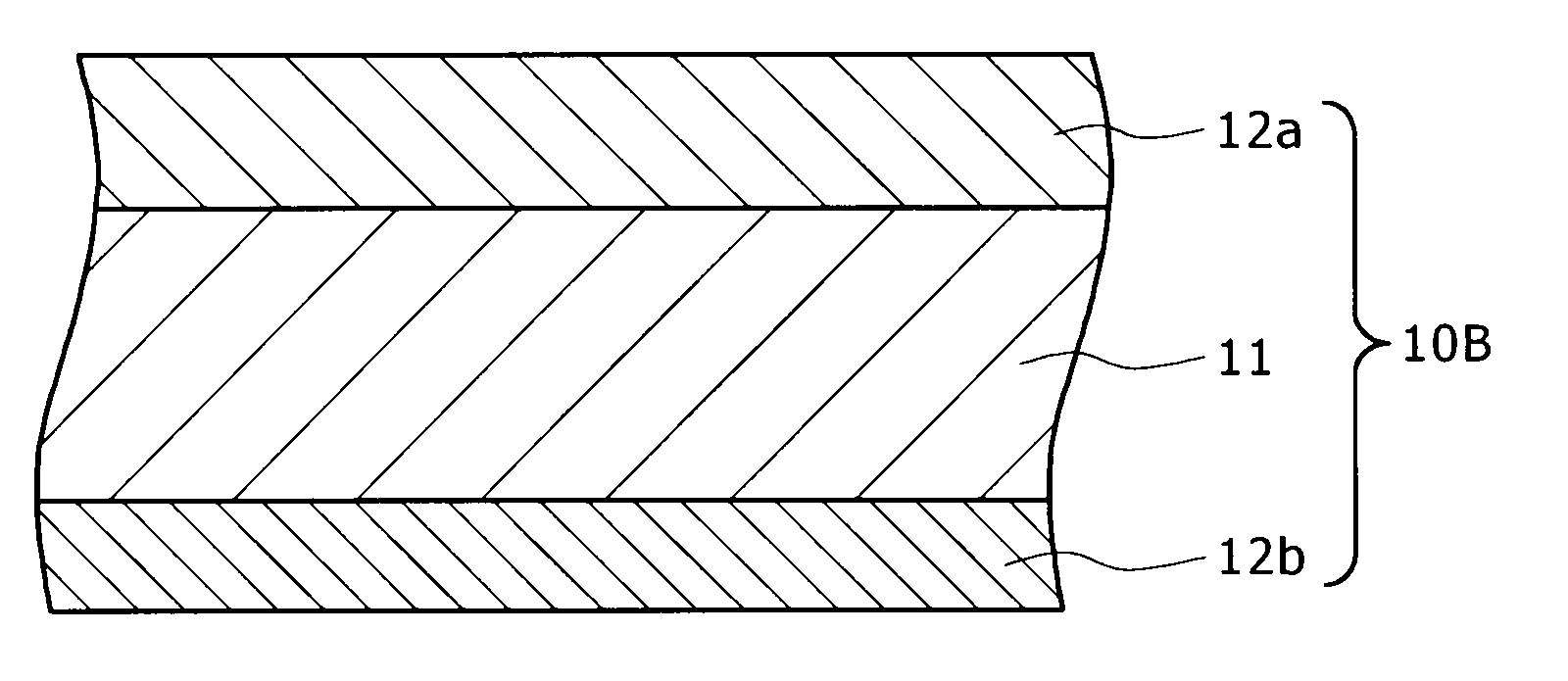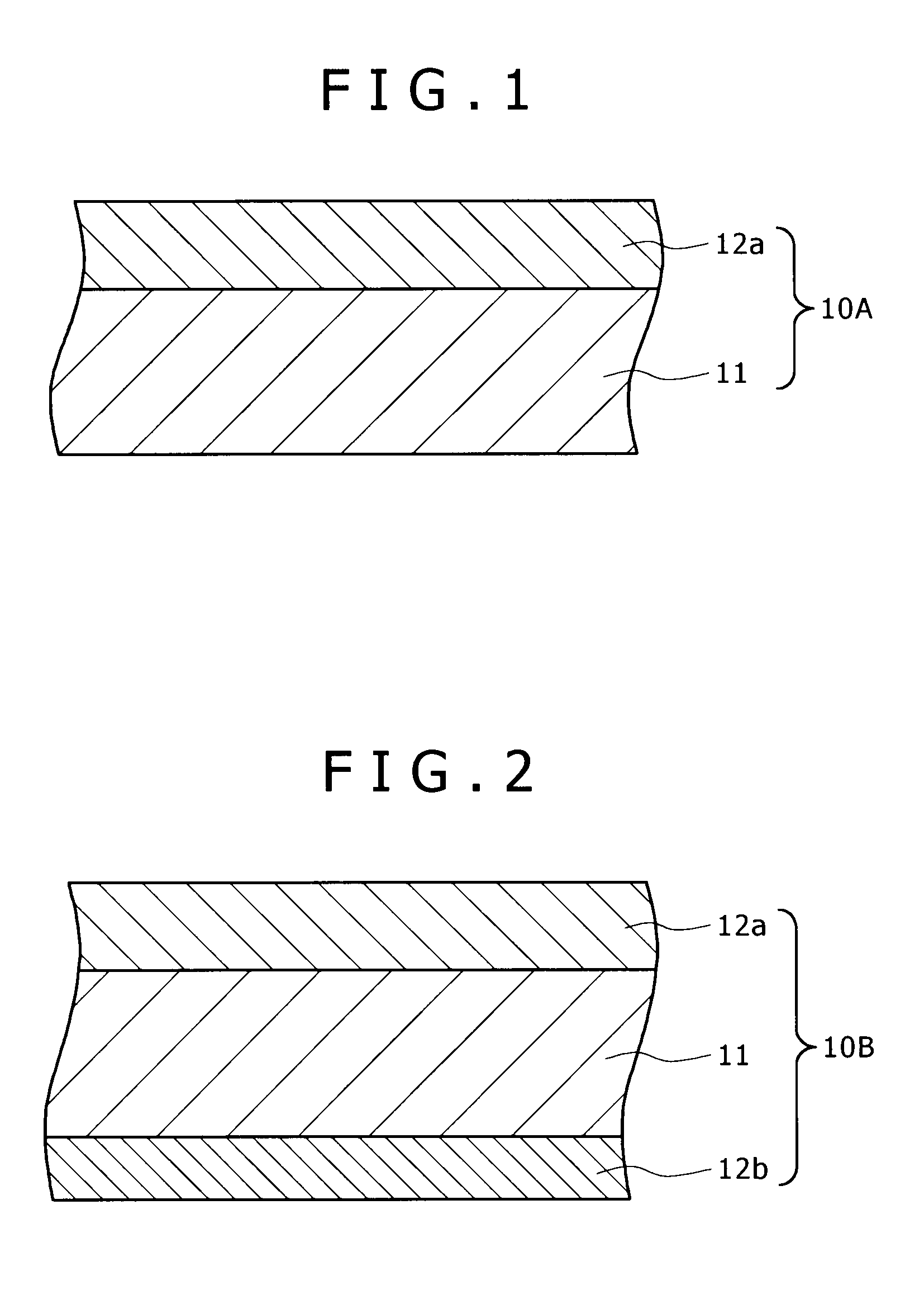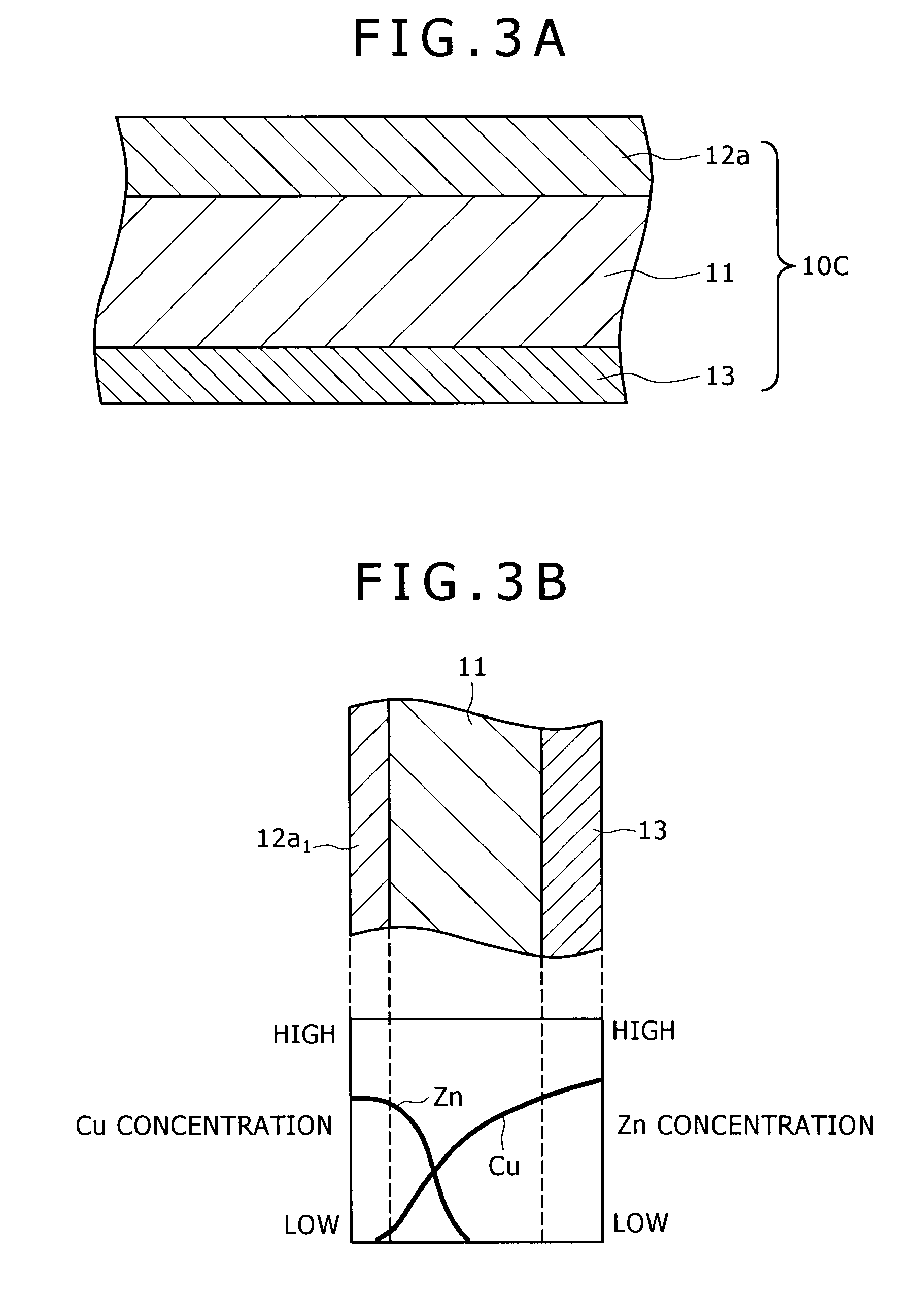Brazing sheet of aluminum alloy
a technology of brazing sheet and aluminum alloy, which is applied in the direction of soldering apparatus, manufacturing tools, light and heating equipment, etc., can solve the problems of insufficient corrosion resistance, insufficient potential, and only a small amount of zn in the brazing surface, so as to improve strength and corrosion resistance
- Summary
- Abstract
- Description
- Claims
- Application Information
AI Technical Summary
Benefits of technology
Problems solved by technology
Method used
Image
Examples
first embodiment
The First Embodiment
[0036]FIG. 1 is a schematic sectional view showing the brazing sheet of aluminum alloy (simply referred to as brazing sheet hereinafter) pertaining to the first embodiment of the present invention. The brazing sheet 10A has a double-layer structure consisting of a core material 11 and a first brazing filler metal 12a formed on one side of the core material 11.
[0037]The brazing sheet 10A is characterized in that the core material 11 contains 0.2-1.0 mass % of Cu and as at least any one of no more than 1.5 mass % of Si, no more than 1.8 mass % of Mn, no more than 0.35 mass % of Ti, and no more than 0.5 mass % of Mg, with the remainder being Al and inevitable impurities. Cu is an essential component, and Si, Mn, Ti, and Mg are optional components. If the core material 11 contains Mn, Ti, and Mg, it is desirable that the Mn content be 0.5-1.8 mass %, the Ti content be 0.05-0.35 mass %, and the Mg content be 0.05-0.5 mass %. Incidentally, the core material 11 is not s...
second embodiment
The Second Embodiment
[0053]FIG. 2 is a schematic sectional view showing the brazing sheet of aluminum alloy pertaining to the second embodiment of the present invention. The brazing sheet 10B has a triple-layer structure consisting of a core material 11, a first brazing filler metal 12a formed on one side of the core material 11, and a second brazing filler metal 12b formed on the other side of the core material 11. It is assumed that the brazing sheet 10B is identical with the brazing sheet 10A in the composition and thickness of the core material 11. It is also assumed that the brazing sheet 10B is identical with the brazing sheet 10A in the composition and thickness of the first brazing filler metal 12a. Therefore, the description of the core material 11 and the first brazing filler metal 12a are omitted here.
[0054]The second brazing filler metal 12b as a constituent of the brazing sheet 10B satisfies the following conditions:
30≦X1≦80 (1a)
Y1≧25 (2a)
1000≦X1×Y1≦24000 (3a)[005...
third embodiment
The Third Embodiment
[0058]FIG. 3A is a schematic sectional view showing the brazing sheet of aluminum alloy pertaining to the third embodiment of the present invention. FIG. 3B is a schematic diagram showing the distribution of concentration of Zn and Cu which is observed after brazing of the brazing sheet. The brazing sheet 10C has a triple-layer structure consisting of a core material 11, a first brazing filler metal 12a formed on one side of the core material 11, and a lining material 13 formed on the other side of the core material 11. The brazing sheet 10C has the core material 11 and the first brazing filler metal 12a which are substantially identical with those of the brazing sheets 10A and 10B mentioned above. The first brazing filler metal 12a remains on the core material 11 after brazing as indicated by “12b1” in FIG. 3B.
[0059]The lining material 13 is a cladding layer of Al alloy on the core material 11. It is distinguished from a sacrificial anodic material in that it do...
PUM
| Property | Measurement | Unit |
|---|---|---|
| thickness | aaaaa | aaaaa |
| thickness | aaaaa | aaaaa |
| shape | aaaaa | aaaaa |
Abstract
Description
Claims
Application Information
 Login to View More
Login to View More - R&D
- Intellectual Property
- Life Sciences
- Materials
- Tech Scout
- Unparalleled Data Quality
- Higher Quality Content
- 60% Fewer Hallucinations
Browse by: Latest US Patents, China's latest patents, Technical Efficacy Thesaurus, Application Domain, Technology Topic, Popular Technical Reports.
© 2025 PatSnap. All rights reserved.Legal|Privacy policy|Modern Slavery Act Transparency Statement|Sitemap|About US| Contact US: help@patsnap.com



